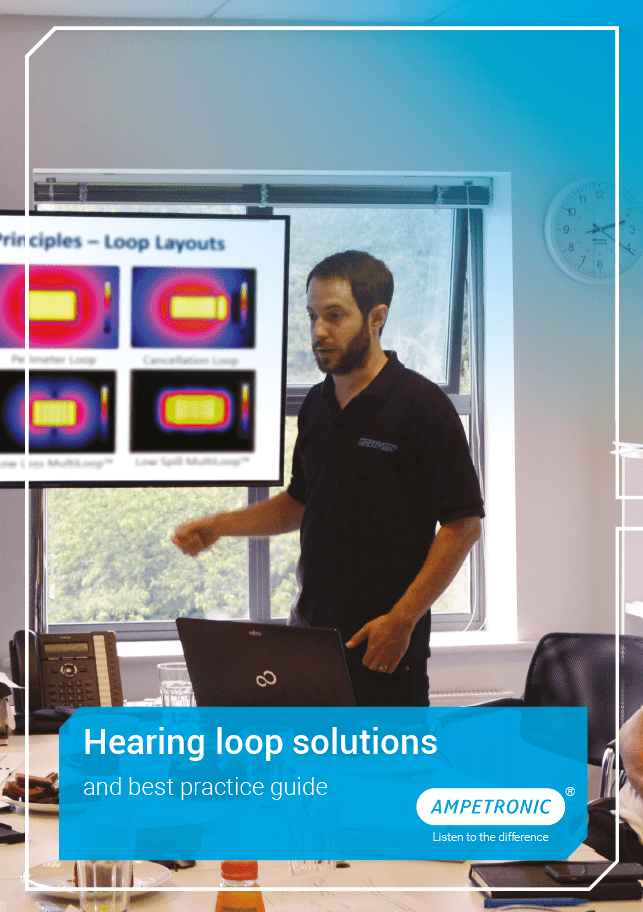A hearing loop, also known as an induction loop or T-Loop, is an assistive listening system that provides access to facilities for those with a hearing impairment. It takes a sound source and transfers it directly to a hearing aid without background noise, interference or acoustic distortion.
Selecting a loop solution, that will adequately meet the needs of a hearing aid user, can be easily determined by asking just a few simple questions:
- What type of hearing solution is required?
- An area coverage solution, such as a hall, theatre or meeting room, or a service point solution (see overleaf), such as a retail counter or reception desk?
- For area coverage loops:
- What are the dimensions of the area to be covered?
- What is the construction of the floor?
- Are there any issues regarding adjacency or privacy?
The guide shown on the right details best practice when selecting the right loop for any given situation.
The table and images below offer an aid to selecting the right loop solution for your area.
| Room dimensions | Floor construction | Adjacency and privacy | Recommended solution | ||
|---|---|---|---|---|---|
| Less than 4m across shortest dimension | or | floor has no metal instructure | and | no requirement | Ampetronic perimeter loop |
| Greater than 4m across shortest dimension | and | floor has metal instructure | and / or | risk of overspill | Ampetronic MultiLoop |
Perimeter loops
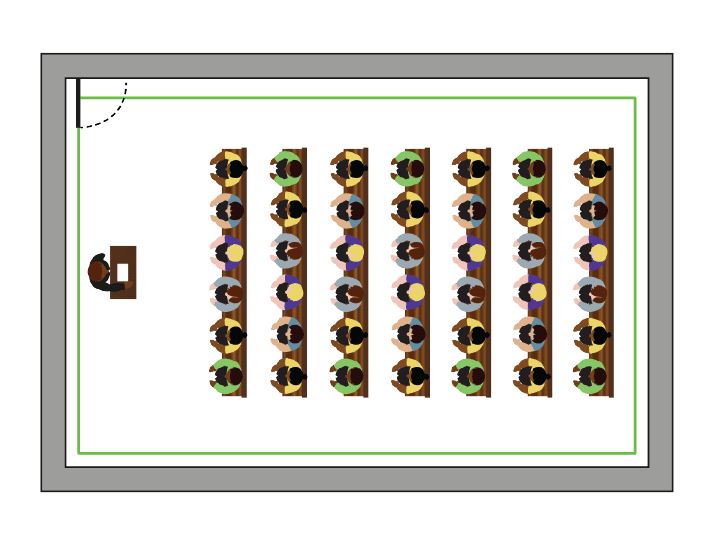
Small room with no metal in floor structure or privacy requirement
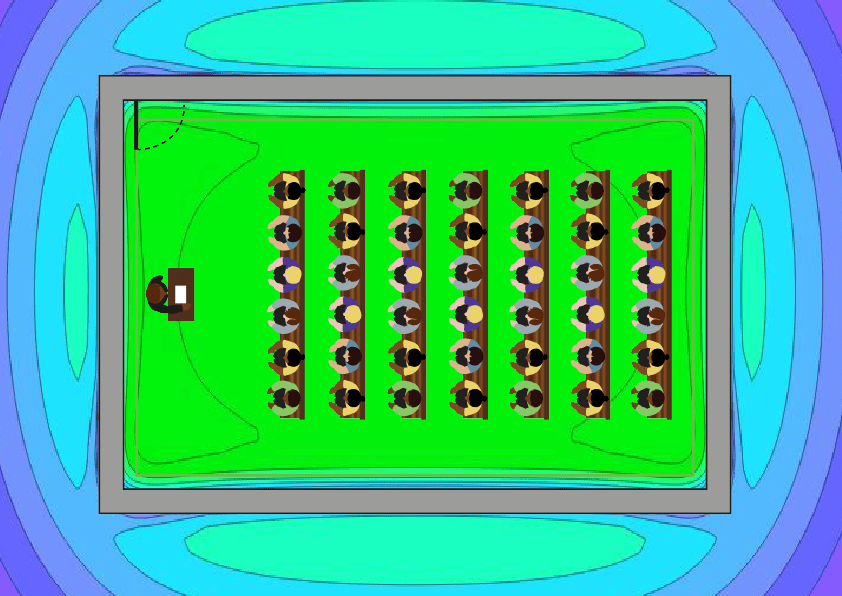
Perimeter loop field illustration, including overspill
Perimeter / boundary loop systems
For more information on Ampetronic perimeter and boundary loop systems
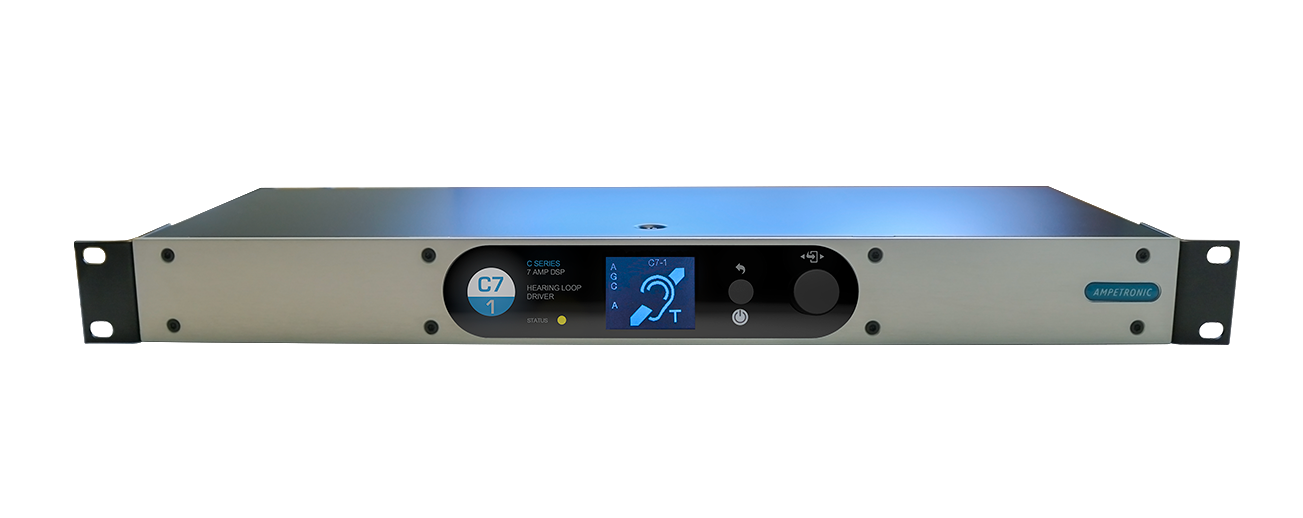
MultiLoops
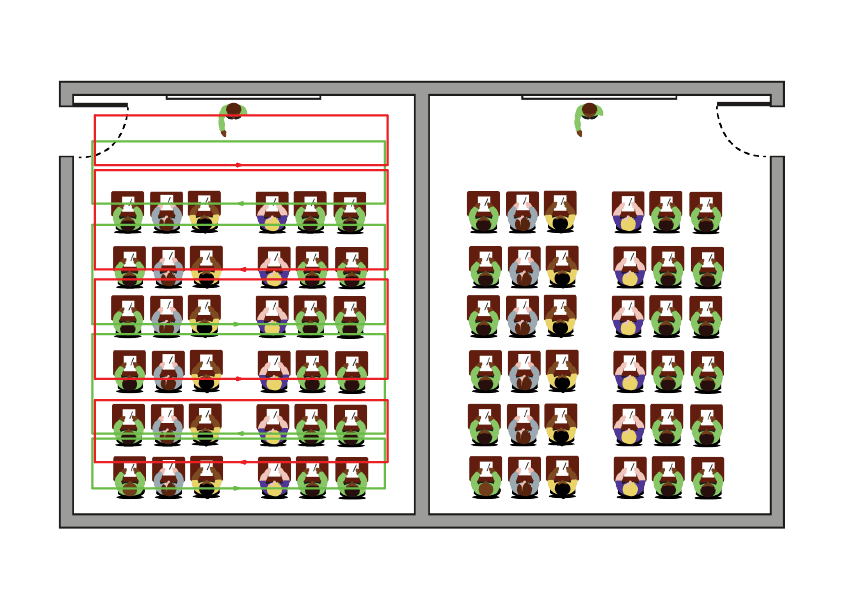
Larger room with metal in floor structure and a requirement to prevent overspill.
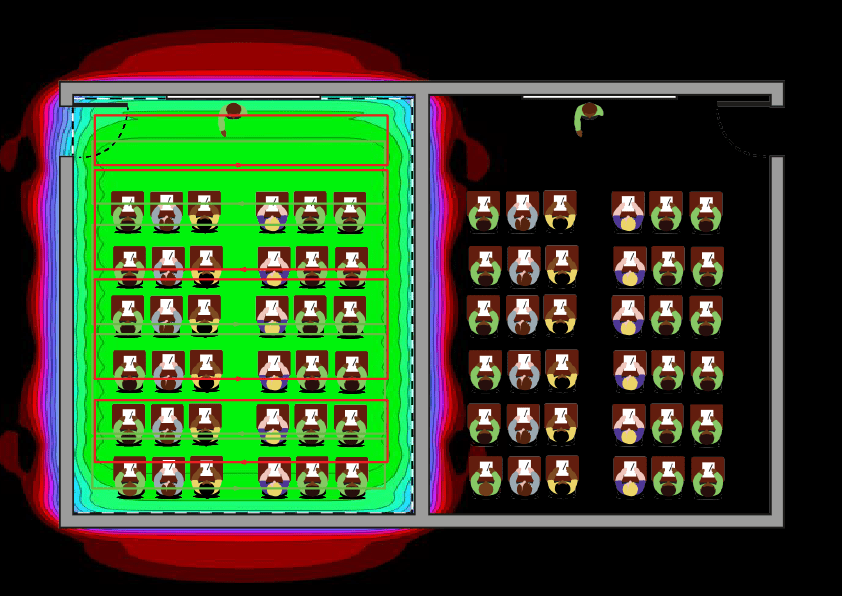
MultiLoop field illustration
Low spill loop MultiLoop
For more information on Ampetronic low spill loop systems
Loss control loop MultiLoop
For more information on Ampetronic loss control loop systems



